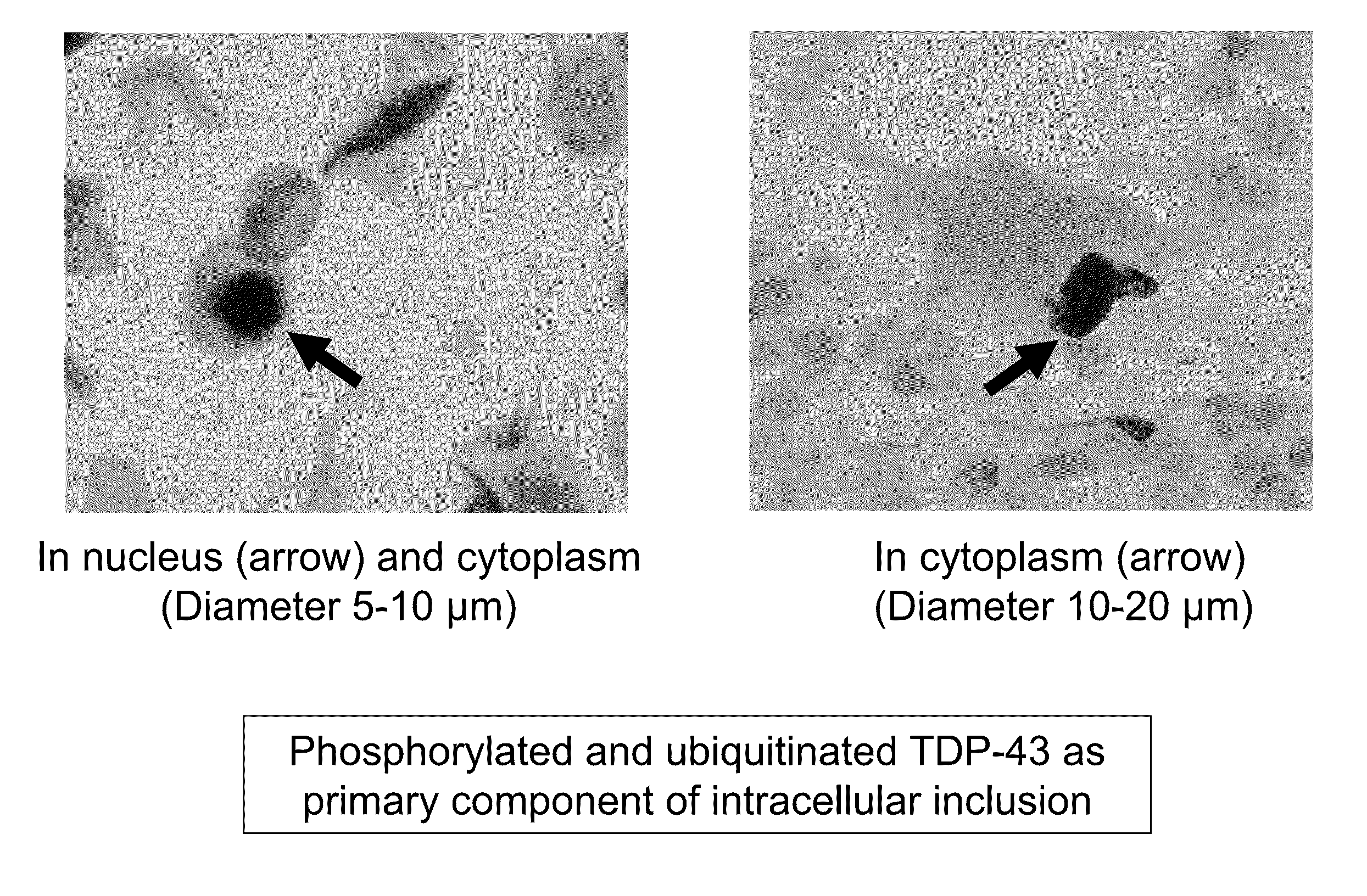Tdp-43-storing cell model
a cell model and storage technology, applied in the field of transformed cells, can solve the problems of nerve cell death and onset of diseases, and achieve the effect of suppressing the formation of inclusions
- Summary
- Abstract
- Description
- Claims
- Application Information
AI Technical Summary
Benefits of technology
Problems solved by technology
Method used
Image
Examples
example 1
[0128](1) Materials and methods
[0129]Construction of Various Plasmid Vectors
[0130]A vector (pRc-CMV-TDP-43) having human TDP-43 gene (SEQ ID NO:1) inserted between NotI and ApaI sites downstream from the CMV promoter of pRc-CMV vector (see Buratti et al., EMBO J., 2001 (ibid.)) was used as a template to amplify the coding region of human TDP-43 gene by PCR. PCR was carried out with the following primer set and reaction solution composition under the following reaction conditions.
[0131]
F primer:5′-CGGGATCC ATGTCTGAATATATTCGGGT-3′(SEQ ID NO: 3)R primer:5′-GCTCTAGA CTACATTCCCCAGCCAGAAG-3′(SEQ ID NO: 4)
[0132]
Template DNA (pRc-CMV-TDP-43; 100 μg / μl):1μLTaqDNA polymerase:1unitF primer (20 μM):1μLR primer (20 μM):1μLdNTP (2.5 mM each):5μL10x Buffer:5μLSterile water:Optimalamount(about36 μL)Total:50μL
[0133]
[0134]Total of 30 cycles of: “denaturing / dissociation at 95° C. for 30 seconds; annealing at 50° C. for 30 seconds; and synthesis / elongation at 72° C. for 120 seconds”.
[0135]The amplified...
PUM
| Property | Measurement | Unit |
|---|---|---|
| Size | aaaaa | aaaaa |
| Elongation | aaaaa | aaaaa |
Abstract
Description
Claims
Application Information
 Login to View More
Login to View More - R&D
- Intellectual Property
- Life Sciences
- Materials
- Tech Scout
- Unparalleled Data Quality
- Higher Quality Content
- 60% Fewer Hallucinations
Browse by: Latest US Patents, China's latest patents, Technical Efficacy Thesaurus, Application Domain, Technology Topic, Popular Technical Reports.
© 2025 PatSnap. All rights reserved.Legal|Privacy policy|Modern Slavery Act Transparency Statement|Sitemap|About US| Contact US: help@patsnap.com



